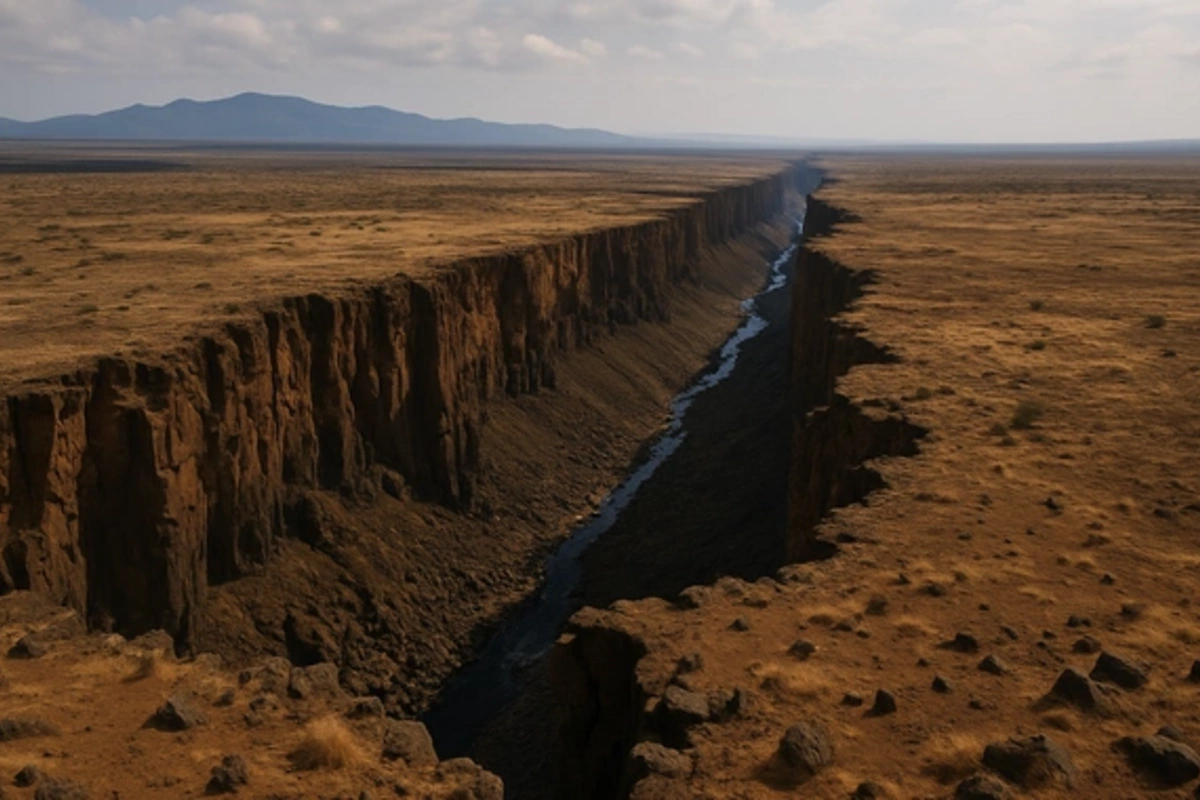09 May , 22:54
0

In East Africa, a geological revolution begins: scientists predict the formation of a new ocean
The African continent is experiencing a grand natural transformation: the East African Rift System (EARS) — a colossal tectonic fault zone stretching over 6,000 km — is steadily expanding. Specialists claim that in this region, in the very heart of Africa, a new ocean of the planet may emerge in the distant future.
A massive split of the African tectonic plate into two parts is occurring: the Nubian and Somalian plates. This impressive geological process is accompanied by underground tremors, activation of volcanoes, and formation of deep fractures in the Earth's crust. In several East African countries — Ethiopia, Kenya, and Tanzania — giant cracks extending several kilometers have already been recorded, appearing almost instantaneously by geological standards.
"We are observing a living example of how continents transform," comments geologist Catherine Clemens from the University of Leeds. "In 5-10 million years, the waters of the Indian Ocean may rush into the forming depression, and a completely new ocean will appear on the world map."
Despite the dramatic nature of such headlines, scientists emphasize that the process is extremely slow and poses no danger to modern humanity. However, it provides researchers with a unique opportunity to observe the birth of a new geographical formation — a phenomenon that usually spans hundreds of millions of years.
The East African Rift is one of the few zones on our planet where one can observe the initial stage of continental division in real time.
A similar process millions of years ago led to the formation of the Atlantic Ocean.
In the future, East Africa may completely separate and turn into a separate continent.